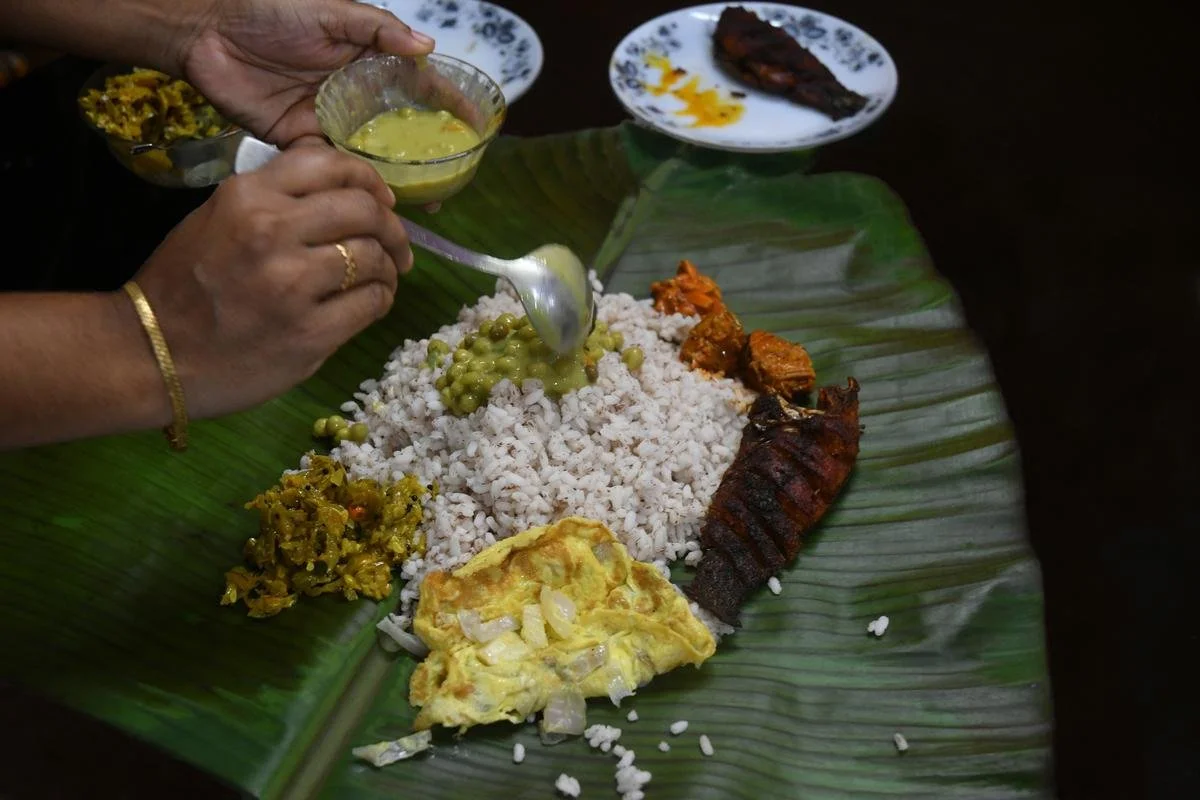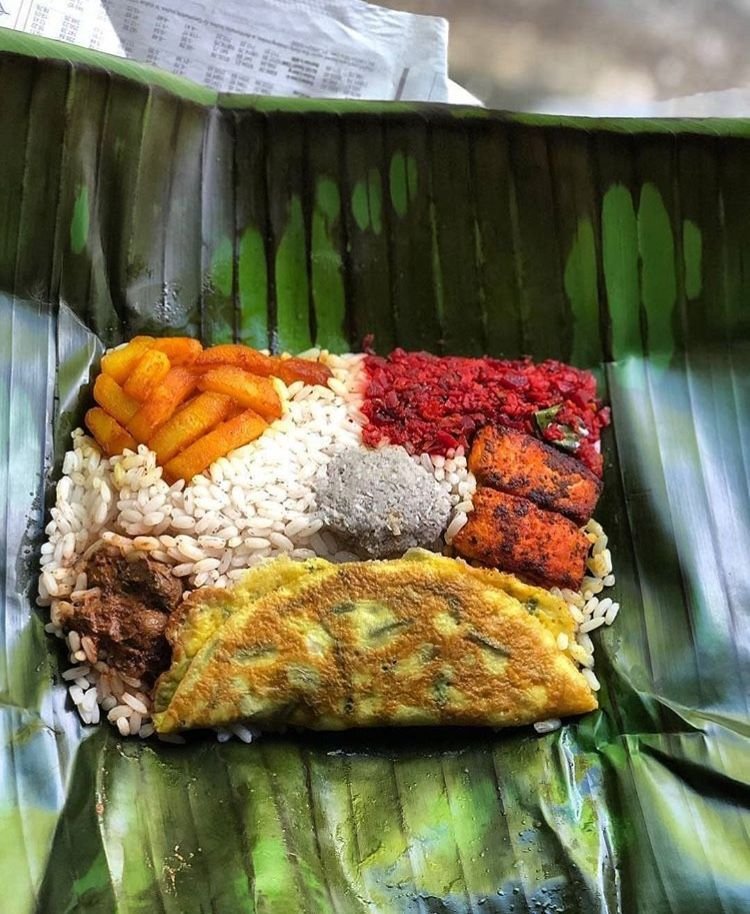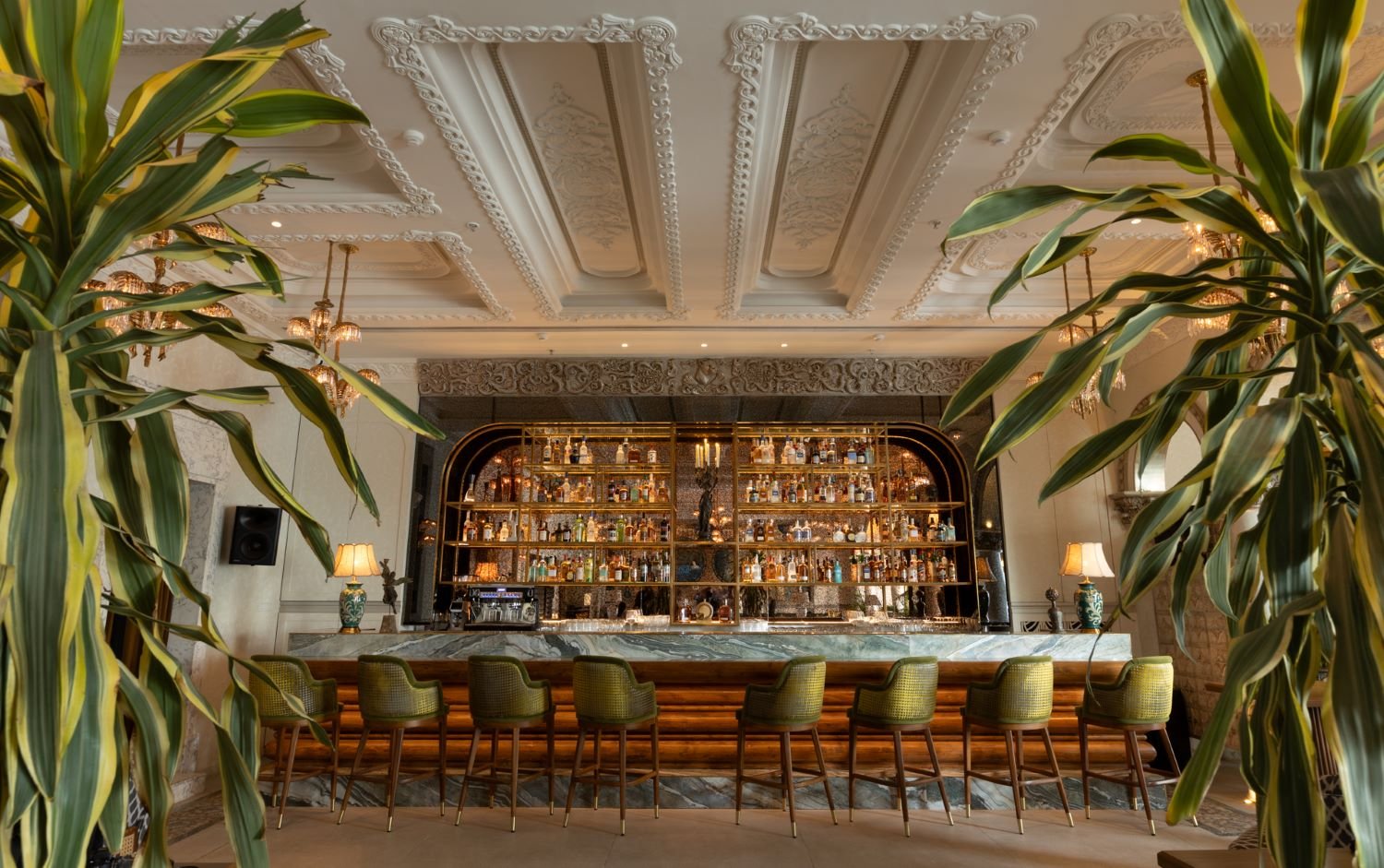Unwrapping the Story on Kerala's Pothichoru

Leaves are often used as an accessory to food. One of the most delicious examples is the pothichoru in Kerala, finds Supriya Unni.
Brown paper packages tied up with string may be a long established favourite, but have you ever unwrapped a pothichoru parcel?
Unwrap first, a layer of newspaper, then inside, a tightly wrapped banana leaf parcel: a portal to Kerala’s cuisine — rice, two kinds of vegetable, chutney, pickles and sometimes, an omelette and fried fish. This is the humble pothichoru or packed rice, a meal-on-the-go that has its own cult following in Kerala.
Old-School Parcels
Pothichoru was the original, biodegradable way of packing a home-cooked meal, typically lunch, before tiffin boxes became the norm. It is popular across all strata of society in Kerala, and has been for generations; to be taken on picnics and road trips, to work — both to offices and in the fields, as well as to school. Chef Regi Mathew, co-founder and culinary director of the Kappa Chakka Kandhari restaurant chain, recalls that as a child, he would plead with his mother to send pothichoru on school days. "My house was very close to the school, and I would come home for lunch every day. But I wanted to eat pothichoru like the other children at school, so my mother used to make it for lunch at home. The whiff when one opens the parcel… I just loved the flavours!" he says.
The concept of pothichoru is simple. “A cleaned banana leaf is wilted for pliability, and also for some added layer of flavour. Only the smooth side is used,” explains Regi. Cooked matta rice, two dry vegetable dishes, a chammanthi (dry chutney), pickles and occasionally, an egg and fish fry are placed on the leaf and tightly wrapped together, secured with a string. There is no strict rule as to what dishes make up a pothichoru; this can vary from family to family. The banana leaf parcel is then wrapped with newspaper, essentially to hold shape. Curries that are runny are carried separately, so that they don’t leak through the leaves.
Why does food wrapped in banana leaves taste so good?
Krish Ashok, author of Masala Lab: The Science of Indian Cooking, breaks it down. “All leaves have a kind of wax on them, which is very similar to saturated fat. Underneath that, they have polyphenols. The wax is nature's way of repelling insects and making the leaf waterproof. When a banana leaf parcel is opened, the trapped aroma molecules dissolve in the melted wax and escape.” Cue that delicious whiff.
Leaves as an Accessory to Food
Leaves have always been a part of cooking, in cuisines across the world — it is a method that is believed to have originated in China, more than 3000 years ago.
Legend has it that the Chinese invented it while commemorating the death of Qu Yuan, a patriot and poet who drowned himself, disillusioned with the monarchy. Distraught citizens cast rice dumplings wrapped in leaves into the river. These dumplings were zongzi, sticky rice steamed with mushrooms and pork or chicken. Aditya Ramakrishnan, who runs Bengaluru’s Má Là Kitchen Supper Club with his wife Dongli, who is from Chengdu, Sichuan province, tells me that zongzi is still made during the Dragon Boat Festival in June every year. “Usually bamboo leaves are used. The parcels are in the shape of a pyramid, and are simmered in water for about five hours," he explains. “Zongzi is found across China, but in the Cantonese region, they have a similar dish called lo mai gai — sticky rice and protein parcels which are precooked and then wrapped and steamed in lotus leaves.”
From China, this method is said to have spread across the world. The type of leaf used varies according to what is available in that specific geography. In India, this method is found across the country.
What makes pothichoru unique is that unlike the majority of these cuisines, the leaf is not subjected to heat after it has been wrapped into a parcel. Traditionally, pothichoru was supposed to be eaten at least two to four hours after it was packed. The food would be packed in the morning and eaten for lunch, with no reheating or cooking.
The Sri Lankan bhath parcel is probably the closest cousin to pothichoru. “Bhath parcels are extremely popular in Sri Lanka especially among the office goers, and not to be confused with the better known lamprais,” explains Priya Bala, author and food critic who spent her formative years in Sri Lanka. Lamprais, the Burgher influenced dish of rice and other elements is packed in a banana leaf and baked, while bhath parcels are not. “They are a meal consisting of rice, lentils, a green vegetable, a raw salad, dried tuna, fish curry, chicken and sambol,” says Priya. The type of rice used is different as are the spices and the various dishes. The common factor, with both parcels, is that the food meant to be home-packed meals.
Pothichoru's popularity in Kerala means it is easily available, even at all major railway and bus stations. In 2017, the Democratic Youth Federation of India (DYFI), the youth organisation of the CPM, started a campaign called Hrithayapoorvam in Thiruvananthapuram. Women volunteered to make pothichoru for patients and their families in hospitals. Party workers collected and distributed them, free of charge. Today, around 40,000 pothichoru parcels are reportedly distributed daily to 50 hospitals in 14 districts of the state.
If you are in Kerala, be sure to sample the banana leaf bentos of South Asia.
Supriya Unni is a Bangalore-based Independent journalist.
ALSO ON GOYA









